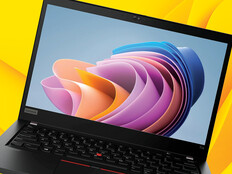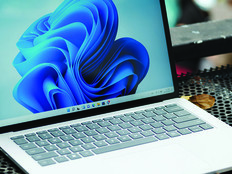Acer Aspire S7: A Combination of Power, Portability and Presence
Glossy, shiny and stylish are three words that describe the Acer Aspire S7. This ultralight notebook represents the sought-after combination of power, portability and presence. It will satisfy even the most demanding user.
End-User Advantages
The entire lid is made of Gorilla Glass 2, with a small aluminum frame. The lid is tough yet flexible; the user can actually bend it back and forth a bit. Two-inch-wide aluminum hinges connect the screen to its base, which features a full-sized backlit keyboard. The keyboard automatically senses ambient light and adjusts the intensity to save power. The 4-inch-wide ELAN Microelectronics touchpad has no right- or left-click button — simply click anywhere on it for a left-click. The touchpad supports multitouch gestures, so users can pinch to zoom.
The Acer Aspire S7 measures 12.7 inches wide by 8.8 inches deep, with an overall thickness of less than half an inch. At just under 3 pounds, it feels like a paper notebook under the user’s arm. A 13.3-inch, 1920x1080-pixel high-definition touch screen fills most of the lid, which can open a full 180 degrees to lie flat if desired. To keep the lid from opening wide while in use, Acer has smartly outfitted the S7 with dual-torque hinges. For the first 135 degrees, it is fairly easy to open the lid to its usual position. Pushing beyond 135 degrees all the way to 180, the hinges resist a bit, keeping the lid at a comfortable position unless the user wants it all the way open.
Under the hood, the S7-391-9411 model that I reviewed features a 3rd-generation Intel Core i7-3517U processor at 1.9 gigahertz with a 4-megabyte Level-3 cache, along with 4GB DDR3 shared RAM and a 256GB solid-state hard drive. Very few ultrabooks boast the i7 processor, which is usually reserved for high-powered desktops and mobile workstations.
Battery life is of major importance to users. When tested under a typical office workload, the 4-cell lithium-ion battery lasted 4 hours, all through the morning, and charged quickly while I ate my lunch. An optional external battery, which attaches smartly to the base, doubles this time and allowed me to get through an entire day. The extra battery does add some weight and makes the ultrabook a bit awkward to carry, so I generally used it only when I knew I was going to stay in one place.
Why It Works for IT
The Aspire S7 comes with many connectivity options, including Wi-Fi 802.11 a/b/g/n and Bluetooth 4.0, as well as an RJ-45 traditional Ethernet adapter that connects through a USB dongle. This network adapter is particularly useful for getting the device onto a network for the first time, so an IT administrator can push policies (including wireless policy) and do initial installations. Two USB 3.0 ports are positioned at the far back of the right side. On the left are a power port, a micro HDMI port, a combo headphone/microphone jack and the power button.
Acer has also included a number of security and backup/recovery tools. Acer Backup and Recovery Manager protects data in case of failure or loss, and Theft Shield keeps the machine’s data away from prying eyes. The Charge and Power Manager programs extend battery life and charge the S7 more quickly. A one-year limited warranty is also included.
Disadvantages
The Aspire S7’s cooling fans create a soft, high-pitched whine that, while not especially loud, can be annoying. The machine also comes with no room to expand its 4GB of DDR3 RAM, which would really complete its evolution to a high-powered device.








